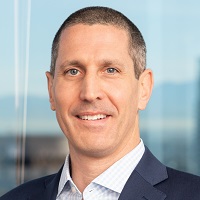Three Common Mutual Fund Misconceptions Debunked
Mutual funds let investors access a basket of securities rather than buying individual ones on their own, but there are some misconceptions about them.


A few times a year, whether in the financial press or from clients and prospective clients, we encounter comments about mutual funds that contain misconceptions. There are three more-frequent misconceptions that I would like to clear up and purge from investors’ memories.
To establish a foundation, it’s essential to understand that a mutual fund, at its core, is a “wrapper,” or an investment structure that allows many individual investors to pool their money to invest in a basket of securities. Instead of buying many individual securities on their own, investors invest in shares of a mutual fund to gain exposure to these securities with one purchase. Buying shares of a mutual fund allows for easier diversification among many securities.
Now, let’s dig into the three most common misconceptions about mutual funds.

Sign up for Kiplinger’s Free E-Newsletters
Profit and prosper with the best of expert advice on investing, taxes, retirement, personal finance and more - straight to your e-mail.
Profit and prosper with the best of expert advice - straight to your e-mail.
Misconception #1: Mutual funds give investors the opportunity to beat the market.
I can see where this misconception originated since active investment managers predominantly used mutual funds. The mutual fund structure dates back nearly 100 years in the U.S., gaining popularity in the 1970s and 1980s. Historically, mutual funds were investment vehicles accessing active investment strategies where professionals running the funds attempted to beat the market they were compared to.
In the 1970s, the first passive investment S&P 500 index fund was made available to retail investors. It was designed to track the market, not beat it. As the popularity of index investing grew, more passively managed mutual funds came to market.
If you participate in a 401(k) or 403(b) plan through your employer, odds are you are given a list of mutual funds to choose from, and there are likely passively managed/index options available to keep plan expenses low. A mutual fund is just a structure to pool investors, and it is critical to understand the stated investment strategy, the underlying investments and the cost of the funds you are considering, which vary per fund.
Misconception #2: Mutual funds have high expenses.
Many legacy funds have high expenses, including manager fees and commissions, which have dominated this investment vehicle for decades. However, many mutual funds today have low expenses. Over the mutual fund’s long history, commissions and fees were relatively high by today’s standards. Further, most actively managed funds failed to beat their benchmarks’ net of fees, leading to investors looking for other options. The mutual fund wrapper became confused with the cost of the active management of many funds.
A lot has evolved in this structure over the past few decades. Fees have been driven down, and a lot of low-cost passive index replication strategies have been offered in the market using this vehicle.
Mutual funds are available in all types of asset classes ranging from stocks, bonds, commodities, real estate and money market. There are mutual funds that blend stocks and bonds for certain levels of risk appetite and many that give investors access to liquid alternative investment strategies. The expense level will be driven by how the mutual fund is managed and what type of assets it invests in. For example, a U.S. stock mutual fund will likely have different costs than a mutual fund investing in commodities.
Investors should also pay attention to the share classes of a specific mutual fund. In many cases, a fund may have multiple share classes with different expense levels. Investment minimums may apply to getting access to the lowest-cost share classes. One of the largest passive index mutual funds operates with a 0.04% annualized fee, which is an example of not all mutual funds having high expenses.
Misconception #3: Buying mutual funds is an investment strategy.
In many cases, investors will use multiple mutual funds to design a well-diversified portfolio to meet their needs. They may also use mutual funds to access a specific asset class on part of their portfolio and different types of investment vehicles for other parts of the overall strategy. For example, a mutual fund that is managed to passively track the S&P 500 index will invest only in large U.S. publicly traded stocks. That might suit certain investors who are comfortable with their entire investment portfolio moving up and down with that particular index.
However, investors who may not need to or be able to tolerate that level of price volatility may end up adding other investment strategies to their portfolio to balance out their stock exposure. They may end up adding an investment allocation to mutual funds that invest in bonds or owning the bonds directly if that is better for the specific investor.
While we discussed three common misconceptions about mutual funds, some of this also applies to a more modern pooled structure called exchange-traded funds (ETFs). These, too, can come with different types of investment strategies and a range of costs. However, investors have different misconceptions about ETFs; many believe they are all low-cost and better than mutual funds.
In some respects, ETFs come with more advantages than mutual funds. For example, being able to trade them throughout the day, certain asset classes are more tax efficient in this wrapper than in a mutual fund, and it is possible to see all the underlying holdings daily. While this is not an exhaustive list, the main point is you must still research what each invests in and how it manages the strategy.
Not all mutual funds are expensive, and not all ETFs are cheap. Remember, these are just pooled vehicles that allow investors access to a basket of securities with one purchase vs buying all individual securities on their own. A financial adviser can help you navigate these types of investments and determine a strategy for your goals and risk tolerance.
Halbert Hargrove Global Advisors, LLC (“HH”) is an SEC registered investment adviser located in Long Beach, California. Registration does not imply a certain level of skill or training. Additional information about HH, including our registration status, fees, and services can be found at www.halberthargrove.com. This blog is provided for informational purposes only and should not be construed as personalized investment advice. It should not be construed as a solicitation to offer personal securities transactions or provide personalized investment advice. The information provided does not constitute any legal, tax or accounting advice. We recommend that you seek the advice of a qualified attorney and accountant.
Related Content
Get Kiplinger Today newsletter — free
Profit and prosper with the best of Kiplinger's advice on investing, taxes, retirement, personal finance and much more. Delivered daily. Enter your email in the box and click Sign Me Up.

Brian Spinelli is based in Halbert Hargrove’s Orange County and Long Beach offices. His responsibilities encompass running the firm’s investment committee as well as advising individuals and institutions on their investment and wealth advisory needs. Brian was named to HH’s management team in 2012. He earned his Bachelor of Arts in Business Administration – Finance from Loyola Marymount University in 2002 and his MBA from LMU in 2005. He is a CERTIFIED FINANCIAL PLANNER™ professional. Halbert Hargrove is the creator of LifePhase Investing and headquartered in Long Beach, Calif.
-
 Ten Cheapest Places To Live in Florida
Ten Cheapest Places To Live in FloridaProperty Tax Make your Florida vacation spot daily living — these counties have the lowest property tax bills in the state.
By Kate Schubel
-
 I'm 50 and my home is worth $5 million. Can I retire now?
I'm 50 and my home is worth $5 million. Can I retire now?It may be oh-so tempting to cash out your upscale home and leave work for good. But should you? We ask the experts.
By Maurie Backman
-
 Bouncing Back: New Tunes for Millennials Trying to Make It
Bouncing Back: New Tunes for Millennials Trying to Make ItAdele's mournful melodies kick off this generation's financial playlist, but with the right plan, Millennials can finish strong.
By Alvina Lo
-
 Early-Stage Startup Deals: How Do Convertible Notes Work?
Early-Stage Startup Deals: How Do Convertible Notes Work?Some angel investors support early startups by providing a loan in exchange for a convertible note, which includes annual interest and a maturity date.
By Murat Abdrakhmanov
-
 SRI Redefined: Going Beyond Socially Responsible Investing
SRI Redefined: Going Beyond Socially Responsible InvestingNow that climate change has progressed to a changed climate, sustainable investing needs to evolve to address new demands of resilience and innovation.
By Peter Krull, CSRIC®
-
 Here's When a Lack of Credit Card Debt Can Cause You Problems
Here's When a Lack of Credit Card Debt Can Cause You ProblemsUsually, getting a new credit card can be difficult if you have too much card debt, but this bank customer ran into an issue because he had no debt at all.
By H. Dennis Beaver, Esq.
-
 Going to College? How to Navigate the Financial Planning
Going to College? How to Navigate the Financial PlanningCollege decisions this year seem even more complex than usual, including determining whether a school is a 'financial fit.' Here's how to find your way.
By Chris Ebeling
-
 Financial Steps After a Loved One's Alzheimer's Diagnosis
Financial Steps After a Loved One's Alzheimer's DiagnosisIt's important to move fast on legal safeguards, estate planning and more while your loved one still has the capacity to make decisions.
By Thomas C. West, CLU®, ChFC®, AIF®
-
 How Soon Can You Walk Away After Selling Your Business?
How Soon Can You Walk Away After Selling Your Business?You may earn more money from the sale of your business if you stay to help with the transition to new management. The question is, do you need to?
By Evan T. Beach, CFP®, AWMA®
-
 Two Don'ts and Four Dos During Trump's Trade War
Two Don'ts and Four Dos During Trump's Trade WarThe financial rules have changed now that tariffs have disrupted the markets and created economic uncertainty. What can you do? (And what shouldn't you do?)
By Maggie Kulyk, CRPC®, CSRIC™